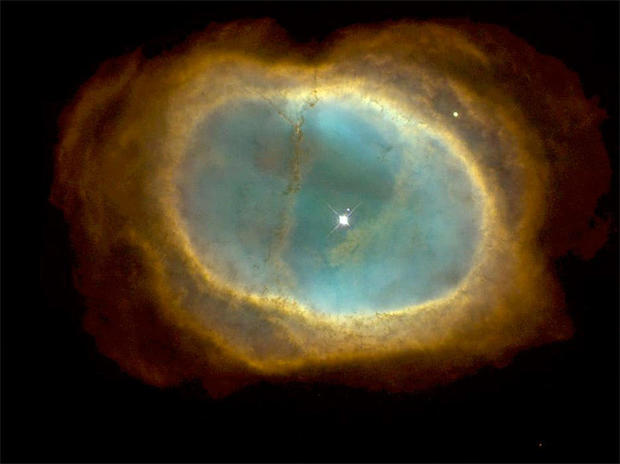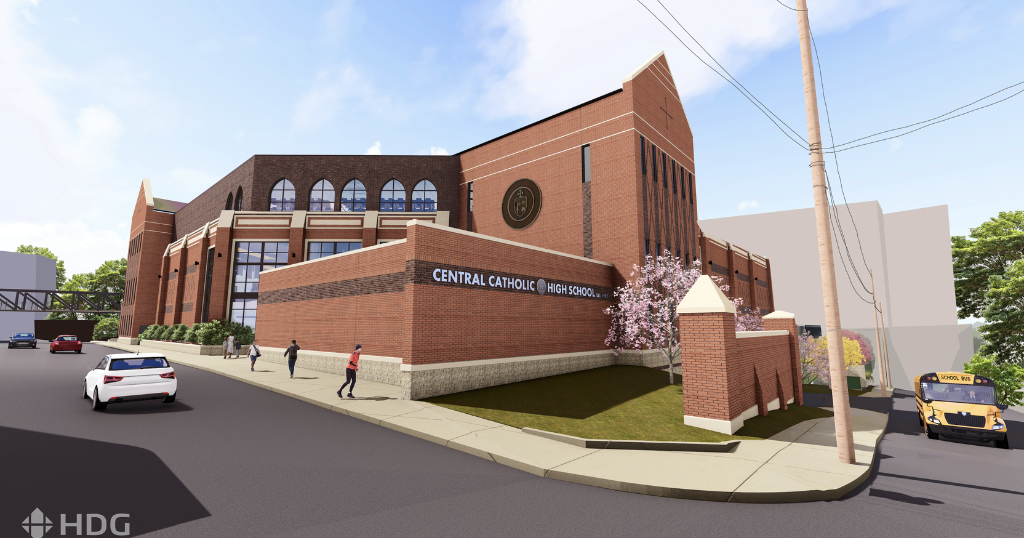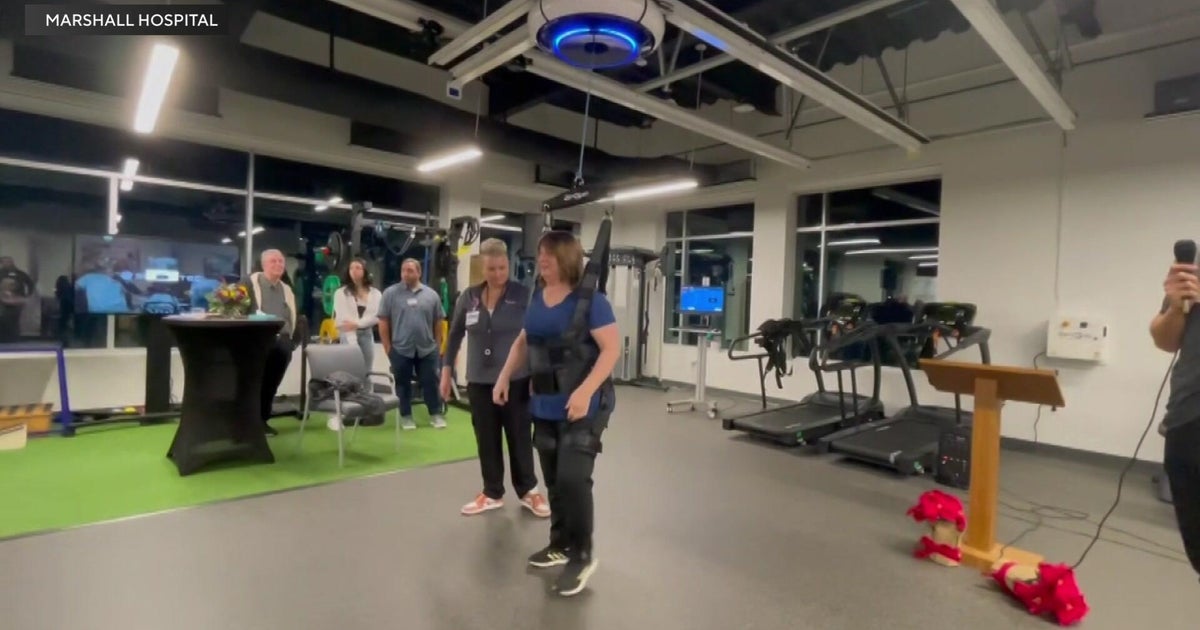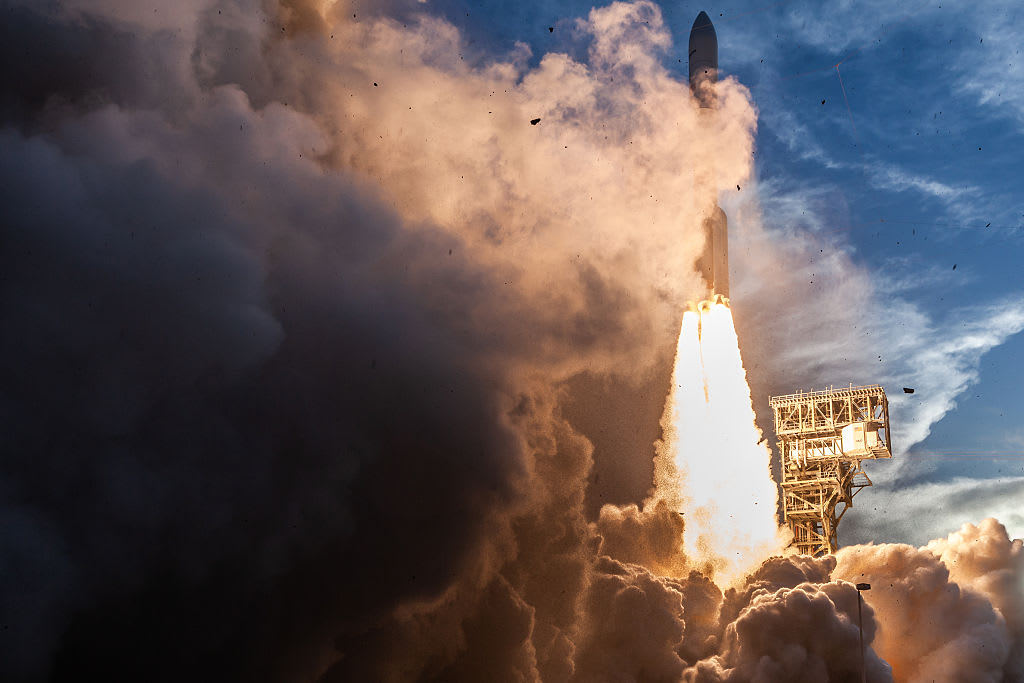First image from James Webb Space Telescope released
President Biden unveiled the first color image from the James Webb Space Telescope on Monday, a jaw-dropping "deep field" photo capturing the faint light of uncounted suns in thousands of never-before-seen galaxies, including arcs of light where their combined gravity magnified images of even more remote background galaxies.
The first publicly-released image, taken to show off the $10 billion observatory's astronomical prowess and to shed new light on when galaxies first began assembling — a major goal of the project — looks farther back in space and time than ever before, to within a few hundred million years of the moment the universe exploded into being 13.8 billion years ago.
"Today is a historic day," Biden said in a White House ceremony. "It's a new window into the history of our universe, and today we're going to get a glimpse of the first light to shine through that window."
"It's astounding to me," he continued. "Light where stars were born and where they die, light from the oldest galaxies, the oldest documented light in the history of the universe, from over 13 billion — let me say that again — over 13 billion years ago."
NASA Administrator Bill Nelson described the image to the president, saying all the stars and galaxies it encompassed were located in an area of space the size of a grain of sand held at arm's length by someone standing on Earth.
"We're looking back more than 13 billion years," he said. "That light that you are seeing has been traveling for over 13 billion years, and by the way, we're going back farther. This is just the first image. They're going back about thirteen-and-a-half billion years. And since we know the universe is 13.8 billion years old, we're going back almost to the beginning."
NASA plans to release additional "first light" images Tuesday, photos designed to showcase Webb's ability to chart the details of stellar evolution, from starbirth to death by supernova, to study how galaxies form, merge and evolve and to probe the chemical composition of atmospheres around planets orbiting other stars.
Closer to home, 7% of Webb's observations over its first year of operation will be focused on planets, moons and smaller bodies in our own solar system. One example: spectroscopic analysis of apparent water plumes from the interior of Europa, one of Jupiter's moons, to determine the chemical composition of a presumed sub-surface ocean that may provide a habitable environment.
For the past 30 years, the Hubble Space Telescope has become one of the most iconic instruments in astronomical history, helping astronomers pin down the age of the universe, confirming the existence of supermassive black holes, capturing what were the deepest views of the cosmos ever collected and providing fly-by class images of moons and planets in Earth's solar system.
But Webb, operating at just a few degrees above absolute zero behind a tennis-court size sunshade, promises to push the boundaries of human knowledge even deeper with a 21.3-foot-wide segmented primary mirror capable of detecting the faint light from the era when stars began igniting in the wake of the Big Bang.
That light has been stretched into longer infrared wavelengths by the expansion of space itself over the past 13.8 billion years, putting it beyond the reach of Hubble, which is optimized to capture visible light. Webb's mirror and instruments were designed for infrared observations, the only way to probe the very early history of the universe.
One of the Hubble Space Telescope's most astonishing images was its initial "deep field" look at a tiny patch of seemingly empty sky over a 10-day period in 1995. To the amazement of professionals and the public alike, that long-exposure image revealed more than 3,000 galaxies of every shape, size and age, some of them the oldest, most distant ever seen.
Subsequent Hubble deep fields pushed even farther back in time, detecting the faint light of galaxies that were shining within about 500 million years of the Big Bang. How stars formed and got organized so quickly into galactic structures is still a mystery, as is the development of the supermassive black holes at their cores.
But the initial Webb deep field released Monday promises to rewrite the astronomy books yet again, providing the data needed to fill in many of the major gaps in the history of the universe, perhaps even providing the framework to determine when — and how — the first massive stars formed, exploded and seeded the cosmos with the heavy elements that make life possible.
"These images are going to remind the world America can do big things, and remind the American people, especially our children, there is nothing beyond our capacity," Biden said Monday.
Launched on Christmas Day, Webb is stationed in a gravitationally stable orbit nearly 1 million miles from Earth. For the past six months, engineers and scientists have been working through a complex series of deployments, activations and checkouts, fine-tuning the telescope's focus and optimizing the performance of its four science instruments.
The initial images released Monday and Tuesday, selected by an international team of astronomers, will "demonstrate to the world that Webb is, in fact, ready for science, and that it produces excellent and spectacular results," said Klaus Pontoppidan, Webb project scientist at the Space Telescope Science Institute.
"And it's also to highlight the breadth, the sheer breadth of science that can be done with Webb and to highlight all of the four science instruments," he added. "And last but not least, to celebrate the beginning of normal science operations."
The targets for Webb's first public images, expected to be released Tuesday, include:
- The Carina Nebula: A vast star-forming region in the constellation Carina some 7,600 light-years from Earth that's four times as large as the Orion Nebula. The Carina Nebula is the home of the most luminous known star in the Milky Way, as well as the Eta Carinae binary system, which includes a massive sun expected to explode in a supernova blast in the near future (astronomically speaking).
- Southern Ring Nebula: An expanding cloud of gas 1 half light-year across that was ejected from a dying star. Relatively low-mass stars like Earth's sun will end their lives by blowing off their outer layers, forming so-called "planetary nebulas" while their cores shrink and slowly cool.
- Stephen's Quintet: A collection of five galaxies in the constellation Pegasus 290 million light-years from Earth that was discovered in 1877, the first such close-together grouping of galaxies to be detected. Four of the five galaxies are gravitationally interacting in a slow-motion merger.
- WASP-96b: An unusual cloudless exoplanet 1,150 light-years away that's about half the size of Jupiter, orbiting its sun every 3.4 days. By spectroscopically analyzing light from the parent star as it passes through the exoplanet's atmosphere on the way to Earth, astronomers can tease out details about its chemical composition.
- SMACS J0723.3-7327: The combined gravity of countless stars in huge galaxy clusters like this one can act as a powerful lens if the alignment is just right, magnifying the light from more distant objects in the far background to provide a deeper look back across space and time than would otherwise be possible.
"The first images will include observations that span the range of Webb's science themes," said Pontoppidan. "From the early universe, the deepest infrared view of the cosmos to date. We will also see an example of how galaxies interact and grow, and how these cataclysmic collisions between galaxies drive the process of star formation.
"We'll see a couple of examples from the life cycle of stars, starting from the birth of stars, where Webb can reveal new, young stars emerging from their natal cloud of gas and dust, to the death of stars, like a dying star seeding the galaxy with new elements and new dust that may one day become part of new planetary systems."
Last but not least, he said, the team will show off the first chemical fingerprints from the atmosphere of an exoplanet.
"This is really only the beginning, we're only scratching the surface," Pontoppidan said. "We have in the first images, a few days' worth of observations. Looking forward, we have many years of observation, so we can only imagine what that will be."









